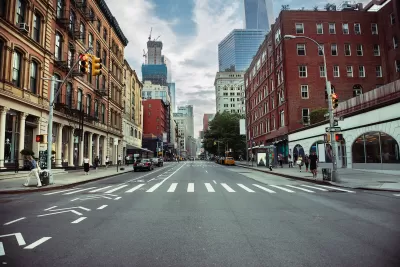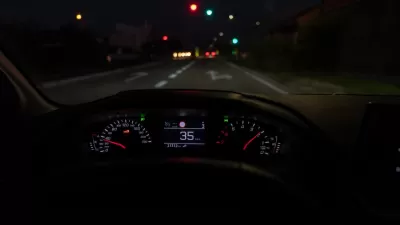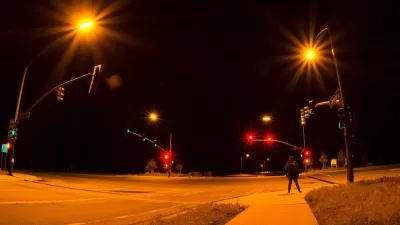Narrowing lanes can improve road safety and reclaim space for other uses.

A new report from the Johns Hopkins School of Public Health concludes that narrower traffic lanes improve road safety. According to the report, “One major finding is that roads with 10–12-foot lanes at 30-35 mph speed limits have a significantly higher number of crashes compared to those with 9-foot lanes. Narrowing lane widths at these speeds provides city leaders with an opportunity to improve safety for all roadway users.”
Other key findings show that lane width affected safety on roads with speeds over 30 miles per hour and that narrower lanes “accommodate more users in less space, use less asphalt pavement, with less land consumption and smaller impervious surface areas.”
According to the report, “We found that the best candidates for lane width reduction projects are streets with 11–13-foot lanes in urban areas with speeds of 20-35 mph, as long as they are not used for heavy freight or transit.” The report recommends setting context-appropriate speed limits, factoring in pedestrians and other road users in planning decisions, setting a narrower lane standard, and using the extra space from lane narrowing for bike lanes or sidewalks.
FULL STORY: Narrow Lanes Save Lives

Trump Administration Could Effectively End Housing Voucher Program
Federal officials are eyeing major cuts to the Section 8 program that helps millions of low-income households pay rent.

Planetizen Federal Action Tracker
A weekly monitor of how Trump’s orders and actions are impacting planners and planning in America.

Ken Jennings Launches Transit Web Series
The Jeopardy champ wants you to ride public transit.

California Invests Additional $5M in Electric School Buses
The state wants to electrify all of its school bus fleets by 2035.

Austin Launches $2M Homelessness Prevention Fund
A new grant program from the city’s Homeless Strategy Office will fund rental assistance and supportive services.

Alabama School Forestry Initiative Brings Trees to Schoolyards
Trees can improve physical and mental health for students and commnity members.
Urban Design for Planners 1: Software Tools
This six-course series explores essential urban design concepts using open source software and equips planners with the tools they need to participate fully in the urban design process.
Planning for Universal Design
Learn the tools for implementing Universal Design in planning regulations.
Ada County Highway District
Clanton & Associates, Inc.
Jessamine County Fiscal Court
Institute for Housing and Urban Development Studies (IHS)
City of Grandview
Harvard GSD Executive Education
Toledo-Lucas County Plan Commissions
Salt Lake City
NYU Wagner Graduate School of Public Service





























